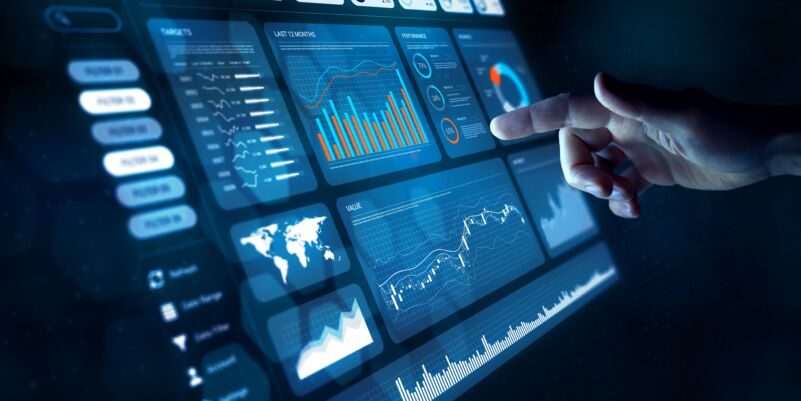[ad_1]
Visa, Mastercard Prepare to Raise Credit Card Fees
Visa and Mastercard are preparing to increase the fees that many large merchants pay when they accept consumers’ credit cards. The fee increases, delayed during the past two years because of the pandemic, are scheduled to kick in next month, according to people familiar with the matter and a document viewed by The Wall Street Journal. [The Wall Street Journal]
Visa and Mastercard may increase the credit card swipe fees charged to larger merchants
© 2018 Bloomberg Finance LP
Russian Banks Turn to China as Visa, Mastercard Cut Business
Sberbank PJSC said it’s looking at the possibility of issuing cards using Russian payments system Mir and China’s UnionPay after Visa Inc. and Mastercard suspended operations following the invasion of Ukraine. The move could allow Russians to make some payments overseas, with UnionPay operating in 180 countries and regions. Visa and Mastercard said that any transactions initiated with their cards issued in Russia will no longer work outside the country from March 10. Cards issued by domestic banks will continue to work in Russia using its payment system. [Bloomberg]
What Biden’s Executive Order Means for the Crypto Industry
Many crypto insiders were pleasantly surprised when the Administration released its executive order on Wednesday, marking the first time the White House has weighed in formally on cryptocurrencies. The order recognized the popularity of cryptocurrencies and directed the U.S. Department of the Treasury and other federal agencies to coordinate their efforts to come up with a regulatory plan. The order tasks a variety of agencies with studying and planning around cryptocurrency policy in areas like consumer protection, national security, and illicit finance. It also urges the Federal Reserve to continue exploring the development of a U.S. Central Bank Digital Currency, a digital U.S. dollar that would be widely available to the general public, and could make digital transactions more secure, faster and cheaper. [Time]
Consumer Credit Grows in January at Slowest Pace in a Year
The amount of credit consumers used in January grew by a scant $6.8 billion, the smallest increase in a year, signaling that households sharply reduced borrowing early in 2022. Borrowing rose at a 1.9% annual rate in January. By contrast, the rate of credit had surged by 6.1%, 10.8% and 6.9% in the final three months of 2021. Americans borrowed the most money in 10 years toward the end of last year. The big slowdown in credit stems from a variety of factors: record coronavirus cases, rising prices, high inflation, limited availability of new cars and households taking a breather after spending big during the holiday season. What’s unclear is whether it’s the start of a trend or just a one-off. [MarketWatch]
Dollar General Adds Financial Services
Discount grocer Dollar General is providing its customers more financial flexibility by introducing new services that increase access to banking options and offer additional payment alternatives. The DG Buy Now Pay Later program is powered by Sezzle and will be tested at more than 1,700 stores in Texas. The spendwell Bank Account and Visa debit card is now available at Dollar General’s more than 18,000 stores, as well as through a dedicated online platform and mobile banking app. Spendwell will provide customers with two financial account options, including one with no monthly fees and another that allows customers to earn 1% unlimited cash back to be redeemed on purchases at Dollar General. [Progressive Grocer]
Consumer Financial Health is Under Increased Strain as Inflation Rises
A Capital One survey revealed that consumers are facing increased pressure on their financial health due to inflation and the Covid-19 pandemic. The study found 47% of low-income consumers reported not feeling financially healthy in February 2022, compared to 42% in April 2020. Capital One found that 27% of Americans reported not being able to pay at least one bill in February 2022, with nearly half of consumers indicating they are worried about making bill payments in the next month. 58% of consumers turned to loans or dipped into savings to cover expenses. More frequent pay could assuage many consumers’ stresses. Employees are growing increasingly unsatisfied with the standard pay cycle as payment technology advances, and are starting to seek more frequent pay. [ZD Net]
Twitter Expands E-Commerce Efforts with Launch of Mobile Storefronts, Twitter Shops
Twitter is introducing a new shopping feature called Twitter Shops, which will allow merchants to curate a collection of up to 50 products to showcase on their Twitter profile. The mobile-first feature, which is free to use, aims to encourage users to go from talking about products on Twitter’s platform to actually clicking through to browse the merchant’s selection, then check out. However, unlike Instagram’s native Shops, these transactions aren’t taking place on Twitter itself. Instead, users first click the “View Shop” button above the merchant’s tweets to visit their shop. Then, when the customer is ready to make a purchase, they’ll click on the item to be redirected to the merchant’s website to complete the transaction. This experience takes place in an in-app browser, which is similar to how TikTok’s new shopping features work. [Tech Crunch]
DoorDash Launches BNPL in Australia With Afterpay
As consumers’ price anxieties make them hesitant to purchase from delivery aggregators, given the high fees these companies charge, DoorDash is turning to buy now, pay later to target these concerned consumers. The company announced a partnership with Australia-based financial technology company Afterpay to offer BNPL on all orders in the fintech company’s home country. If U.S. businesses are any indication, a significant portion of restaurants are interested in offering their customers BNPL options. [PYMNTS]
American Express Personal Loans Offer Mid-Size Loan Amounts That May Appeal to Existing Card Members
Personal loans have become a popular option for covering a variety of large expenses, like a home renovation, a wedding, a surprise expense, a funeral and more. In some cases, it can actually be more affordable to use a personal loan compared to using a credit card since personal loans typically carry lower interest rates. It’s even better when a personal loan, like American Express Personal Loans, don’t charge application fees or origination fees. American Express is also one of few large household names in the big banking industry to offer personal loan products to everyday customers. [CNBC]
30 Shocking Credit Card Facts 90% of Americans Don’t Know
There were 365 million open credit card accounts in the U.S. as of the end of 2020. Or, to put that another way, 79% of consumers own at least one credit card or charge card, which is the highest percentage in the Survey of Consumer Payment Choice since the Fed first began conducting it in 2008. You probably have at least one credit card. And, if you do, then you should be aware of these 30 shocking credit card facts you don’t know if you want to save time and money. [Due]
The Future of Banking: Will Online Banking Eliminate Brick & Mortars?
According to a recent survey from GOBankingRates, more than one in four people (27%) do their banking entirely online. That includes 31% of 25- to 34-year-olds. Most people wouldn’t guess that 35- to 44-year-olds were even more likely to abandon brick and mortars altogether, but it’s true. A full 36% of respondents from that demographic now do all of their banking online. So, what does it mean for the future of banking when a quarter of America, including a full third of those middle-aged or younger, has put the traditional branch behind them? [GO Banking Rates]
[ad_2]
Source link




More Stories
Must-Know Business News to Stay Ahead in 2024
The Latest Business News Shaping the Global Market
How Business News Is Influencing Economic Growth